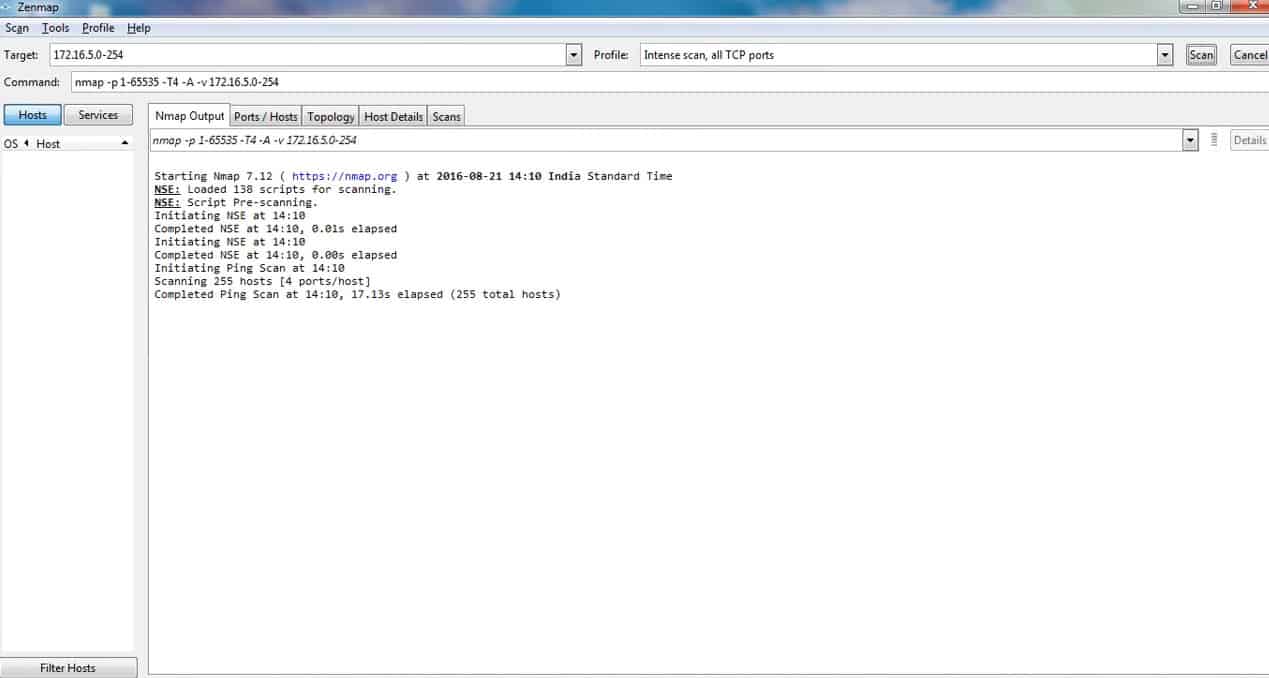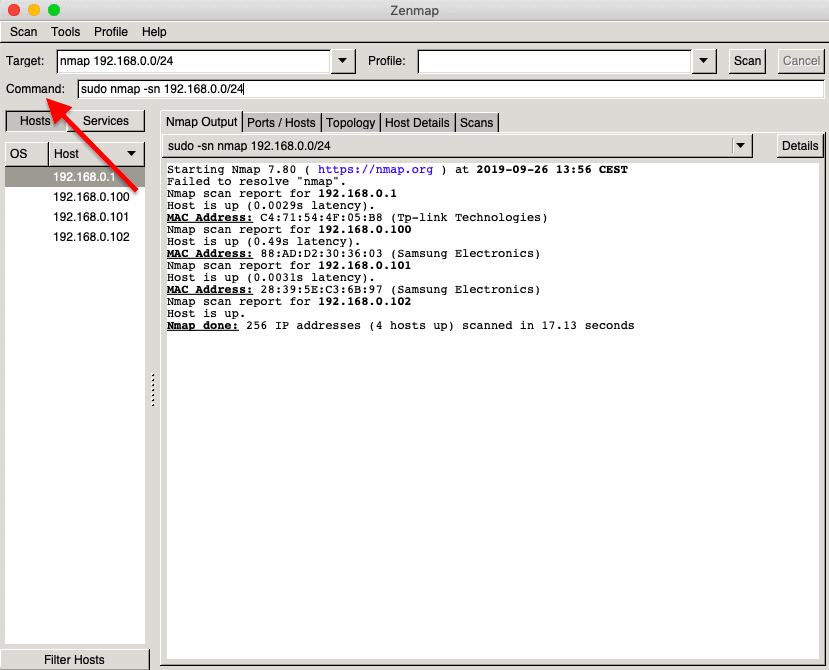

at 18:40Ĭompleted Parallel DNS resolution of 1 host. Initiating Parallel DNS resolution of 1 host. Scan in verbose mode ( -v), enable OS detection, version detection, script scanning, and traceroute ( -A), with version detection ( -sV) against the target IP ( 192.168.1.1): :~# nmap -v -A -sV 192.168.1.1Ĭompleted ARP Ping Scan at 18:40, 0.06s elapsed (1 total hosts) Palo Alto Networks does not support any third-party operating systems.DARK Tool Documentation: nmap Usage Example Note: This article is written for informational purposes only.

Please use the appropriate subnet in CIDR notation in your nmap commands. The Subnet 192.168.0.0/24 is used as an example in this article. TCP Port Scan keeps track of connections (events) to the same destination IP's to different destination ports in a sliding time window.

Host Sweep keeps track of connections (events) to different destination IP's to the same destination port in a sliding time window.In a nutshell Host Sweep and TCP Port Scans are opposites::

destination port 80 or 443 are highly likely to be FP's). Host Sweep keeps track of connection going to different IP's on the same destination port (i.e. If you also have Host Sweep enabled in an internal zone, by definition, a Host Sweep is very similar to regular internet activity. You can then begin working on adjusting the TCP Port Scan sensitivity to be able to provide TCP Port Scan detection while avoiding False Positives. The first suggested step is to remove randomization so that you can verify that the alerts do trigger in the firewall. This decreases the likelihood of counting enough distinct ports per destination IP within the configured interval, so it will be easier to see hits of TCP Port Scan if you either remove randomization from the nmap scan, or adjust the interval and threshold values to make the detection more sensitive. nmap randomization will send scans of random ports to random desintation IP's in the subnet. It keeps a counter of ports hit per destination IP within a sliding time window (interval), and triggers the alert if enough hits cross the configured threshold. The TCP Port Scan option tracks scanning of distinct ports against the same destination IP address.


 0 kommentar(er)
0 kommentar(er)
